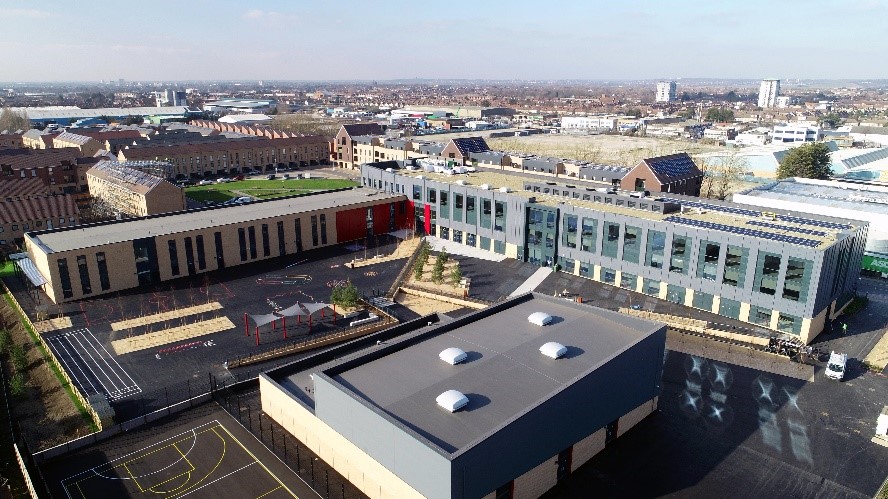Lymington Fields is Europe’s largest school with over 4,000 pupils, once fully occupied, and was handed over 7 months ahead of programme, in just 15 months.
The client, the London Borough of Barking & Dagenham took the project to market with a RIBA Stage 3 design and received back several unaffordable tenders.
The adoption of Mid Group’s Manufacturing Led Construction approach allowed us to sign a contract at £26m, against market tenders of over £35m, with savings of c.£3.5m alone on prelims. This took the project from being unaffordable to deliverable.
Mid Group were appointed following the failed procurement, on the basis that we had delivered a previous project for the same client to the £/m2 anticipated for the Lymington Fields Project. Mid Group were approached to see if the same concepts and components could be used here.
After a short assessment period with our supply chain partners and preferred design team, we were able to confirm to the client that their budget was achievable. This had to be done within the constraints of the existing, outline planning submission, and fully compliant with the DfE Output Specification.
The use of an offsite solution allowed the project to be delivered before the same end date envisaged under the original procurement, despite a later start on site date. Notwithstanding the later start date, the scheme was still delivered 7 months early.
Mid Group uses a Manufacturing Led Construction approach. This adopts the principle of manufacturing as much of the building offsite, bringing only completed components to site and then installing them as quickly as possible. Because the work becomes repetitive, with the same component being used regularly, the process becomes much quicker over time.
The focus was on identifying the fewest number of components that would enable the delivery the new school. Each component had to deliver more than one role in the building, be cost efficient and quick to install to meet the client’s requirements. Components included:
- VRF units that provided cooling and heating.
- Precast concrete floors that provided a floor, exposed soffit and thermal mass.
- Combined lighting and acoustic rafts, with all sensors incorporated.
16 core components were used repetitively throughout the project, delivering economies of scale, but also increased efficiency in installation. The approach also reduces the cost of, and simplifies, maintenance.
The components were also improved on from one project to the next, with high levels of continuous improvement being realised on Lymington Fields when compared to prior projects. The primary energy usage for this scheme is c.80% of the anticipated level by the Department for Energy. This means in practice that the school will realise a utility saving of c.20% per annum, or approximately £30,000, which can be ploughed back into teaching.
The project was delivered with an AFR of 0.0, demonstrating that despite the speed, health and safety was not compromised.
Further, as most of the work was undertaken offsite, absolutely no waste went to landfill from the site.
Key achievements
- This is Europe’s largest school with over 4,000 pupils, once fully occupied, and was handed over 7 months ahead of programme, in just 15 months.
- The adoption of Mid Group’s Manufacturing Led Construction approach allowed us to sign a contract at £26m, against market tenders of over £35m, with savings of c.£3.5m alone on prelims. This took the project from being unaffordable to deliverable.
- The finished product is highly sustainable and future proofed. There is no heating system across the school, but comfort cooling is provided throughout, as overheating is the real issue in schools.

